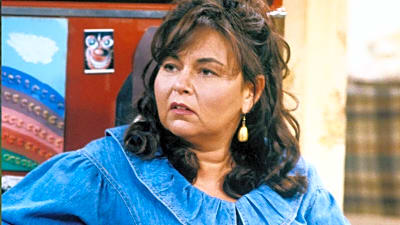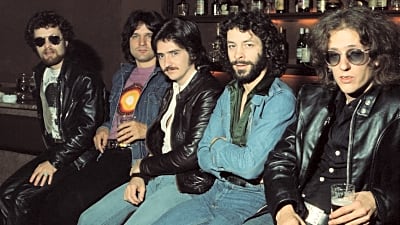
"Dick Tracy": Warren Beatty's mercurial masterpiece
“I don’t want to see any psychology in this f*****g thing. Don’t try to earn your money here.” – Warren Beatty to “Dick Tracy” screenwriter Bo Goldman
“This is not some cockamamie detective story. My film is about a guy torn between love and duty.” – Also Warren Beatty to “Dick Tracy” screenwriter Bo Goldman
Warren Beatty is a notoriously mercurial filmmaker. When he attaches himself to a project, he takes complete and total control of it. From development to postproduction, he is committed to making the best film possible and getting the best out of his frequent collaborators — aka the “Beatty Bunch” — many of whom (cinematographer Vittorio Storaro, production designer Richard Sylbert and composer Stephen Sondheim) are arguably the very best at what they do. And when you’re prone to knocking out classics like “Bonnie and Clyde," “Shampoo” and “Reds," it’s hard to argue with that process.
It’s also hard to endure.
While Beatty demands excellence, he’s often infuriatingly vague on what said excellence entails. He drove Hal Ashby mad on “Shampoo," damaged his friendship with Elaine May on “Ishtar” and scared Gene Hackman off subsequent collaborations after putting the no-nonsense actor through endless takes on “Reds." And as the above quotes from Peter Biskind’s immensely readable Beatty biography, “Star," make clear, he was never more indecisive than during the writing of “Dick Tracy” — primarily because he’d never made a film this personal.
A live-action rendition of Chester Gould’s long-running comic strip had been kicking around Beatty’s head since the 1970s. He had a primal connection to the material. His father read the cartoon to him when he was a young boy, which prompted the lifelong autodidact to learn how to read via the strip’s dialogue bubbles. And yet Beatty did not chase the material as aggressively as he could have.
Producers Art Linson and Floyd Mutrux set the project up at Paramount with John Landis attached to direct, and they approached just about every bankable leading man of that era (e.g. Clint Eastwood, Harrison Ford, Richard Gere) for the title role. Meanwhile, when a co-financing deal was struck with Universal, Beatty nearly hooked up with director Walter Hill for a “Dick Tracy” movie in the early ‘80s, but the star had zero interest in Hill’s dark-and-violent take on the material. Beatty cleverly priced himself out of the production, effectively killing the studio’s interest in the project.
Now that “Dick Tracy” was a dead fish in Hollywood, it was the perfect time for Beatty to pounce on the rights, which he’d always coveted. But aside from his childhood connection to the material (which was not well known in the industry), what was the allure? Gould ceased writing the strip in 1977, and, save for prominent placement in the funny pages of the Chicago Tribune, it was largely out of circulation.
Beatty Bunch-er Sylbert didn’t get it. “It offers you nothing. The guy is no Sherlock Holmes, he doesn’t have superpowers, there are no big action scenes.” Yet Beatty still had enough sway to get a green light from Disney (specifically Jeffrey Katzenberg, the wunderkind exec who’d migrated from Paramount to the Mouse House), but the studio put him on a fixed $25 million budget and limited his gross participation deal.
Enter Goldman, the Oscar-winning scribe of “One Flew Over the Cuckoo’s Nest” and “Melvin and Howard." Goldman was every bit the writer Robert Towne (“The Last Detail," “Chinatown," “Shampoo”) was, but he lacked Towne’s facility for movie-star flattery. He also was walking into a minefield of repressed emotions. Beatty was driving himself nuts trying to crack the screenplay for “Dick Tracy," and the cause of his mania was a late-breaking midlife crisis. “The Pro," as Jack Nicholson dubbed him, had played a fertile Hollywood field of paramours for some 30 years; he was the world’s most eligible bachelor. You probably thought that song was about him.
So Goldman’s challenge was twofold: write a commercial screenplay that hit the coveted four quadrants but also captured the inner turmoil of the film’s star and director.
That inner turmoil is “Dick Tracy," and if no one picked up on it at the time, that’s because Disney, Beatty and his media savvy girlfriend/co-star, Madonna, were selling prime Hollywood sizzle. Here was Beatty, the incorrigible 50-year-old playboy, cavorting with the controversy-courting recording artist who’d just scandalized a nation (and lost a Pepsi endorsement) by dancing in front of burning crosses and kissing a black Jesus. It was tabloid catnip from the start, and who cares if it was genuine? Beatty’s timid appearance in Madonna’s concert documentary, “Truth or Dare," suggests he was less than sold on the coupling, but this is also a man who would force TV news crews to shoot him in soft focus. Madonna knocked him off his center. He had zero control.
Before Beatty cast Madonna as the temptress showgirl Breathless Mahoney, he auditioned an up-and-coming actress named Annette Bening. This is worth noting because while Madonna is bringing her fastball in every seduction scene (and she had Hayworth heat), Beatty looks distracted. Granted, that’s his move. To continue/belabor the pitching metaphor, Beatty was the Greg Maddux of movie stars: He had a fastball, but he preferred to work around the plate; you never got the pitch you wanted, but before you knew it he was all you ever wanted.
This evasiveness doesn’t work with Madonna, and it pisses her off. He’s 50, and she’s in her desirable prime…what the hell does this confirmed libertine want?
A wife. A family. A reason to stay home.
Glenne Headly’s Tess Trueheart is right there across the dinner table, and The Kid (Charlie Korsmo), a tough-talking urchin who’s tumbled into Tracy’s life, is eager for a reason to stay out of the orphanage. Breathless pleads with Tracy to take a risk, and he does: He buys a ring for Tess and adopts The Kid (who changes his name to Dick Tracy Jr.). It’s the most poignant moment of Beatty’s filmmaking career. The control freak, the rake, is giving up his bachelorhood, accepting the perils of parenthood and surrendering to boundaries. He’s going to come home.
A few years ago, I spotted Beatty and Bening, his wife of over 20 years by this point, at a gastropub in Hollywood, California. The establishment was next door to the Upright Citizen’s Brigade Theatre, where, I soon learned, their daughter had just performed with her improv troupe. I hung back. Everyone did. That’s the nice thing about Hollywood. No one bothers the celebrities. A couple of hours later, I walked outside, and there was Beatty. His daughter was introducing her friends to her parents, and he looked like every dorky dad I’ve ever seen. Worn leather jacket, worn blue jeans, worn sneakers… I wanted to cry. He was bereft of guile. It was his daughter’s night. Beatty was just some tall, socially awkward doofus who’d changed the course of film history before I was born. In that moment, I cycled through everything — “Bonnie and Clyde” to “Bulworth” — and realized this mercurial perfectionist had made his masterpiece.
More must-reads:
Customize Your Newsletter
 +
+
Get the latest news and rumors, customized to your favorite sports and teams. Emailed daily. Always free!







